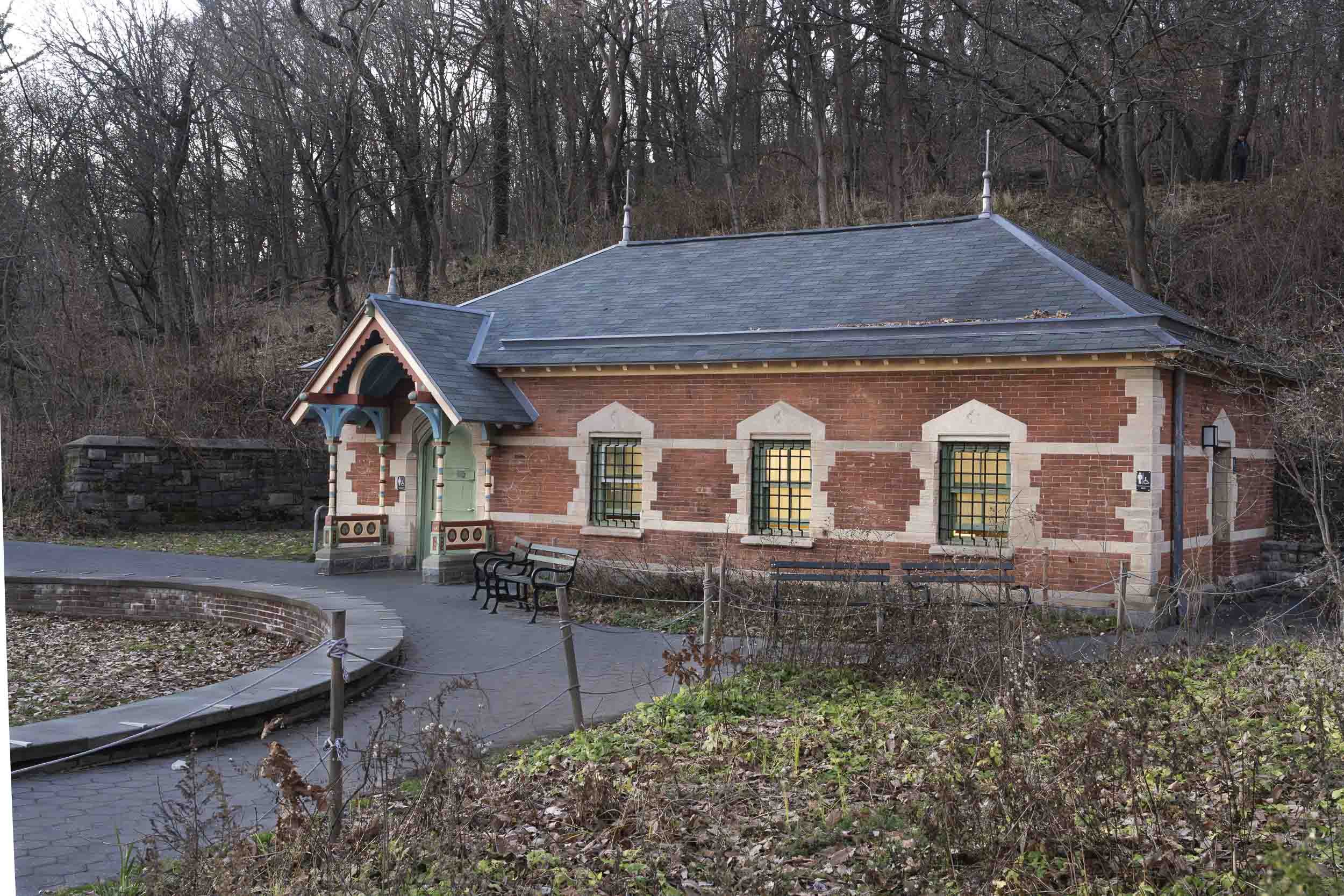The following are select images of Prospect Park. There are additional images that appear on other pages of the website.
The Meadowport Arch.
The Audobon Center is primarily used for education as an urban interpretive center. It was originally the Prospect Park Boathouse, built between 1905 - 07. It sits by the Lullwater, a interior waterway of Prospect Park. It had been destined for demolition in 1964, but was saved within hours of scheduled demolition.
The Litchfied Villa, lighted for Christmas and New Years. It was built by Edwin Clark Litchfield, a railroad magnate and real estate developer. The villa was built between 1854 and 1857 and is located just inside Prospect Park. It now serves as the headquarters for the Prospect Park Alliance, the organization that oversees the management of Prospect Park.
The Wellhouse, also known as the pump house, is situated next to Prospect Park Lake. Built in 1869, its original purpose was to pump water from the cistern (the circle of stone and brick are remnants of the cistern in front of the building) to the waterways in the Park. The pumphouse became obsolete when New York City installed pipes to bring City water to the waterways and has been converted into bathrooms for park visitors.
The Tennis House was built in 1909-10 as a facility for users of tennis court that once existed in the Park. Unfortunately, today it is used as a parking lot for Prospect Park Alliance equipment.
At the southwest entrance to Prospect Park are two statues of Horse Tamers, dedicated in 1899. The sculptor was Frederick William MacMonnies and the architect of the project was Stanford White. On each side of the Horse Tamers are pavilions designed by White (see below). According to the Prospect Park website, the Horse Tamers was designed as an allegory of the Triumph of Mind over Brute Strength.
A partial view of the Nethermead Arch.
The Music Grove Bridge (wood with metal supports), was restored in 2023, after this photo was taken.
One of the two pavilions on each side of the Horse Tamers statues.
The Lafayette Memorial, located at the 9th street entrance, was a gift of Henry Harteau, a Brooklyn glass insurer of French ancestry, as described on the New York City Parks website. The relief was sculpted by Daniel Chester French in 1917.
Marquis de Lafayette came to the colonies to help them fight for their independence from Britain. The groomsman in the relief is speculated to be James Armistead, who served as a spy for Lafayette during the Revolutionary War by posing as a runaway slave. After the war, he was granted his freedom by the Virginia Legislature and went on to become a successful farmer (as well as owning slaves). He eventually changed his last name to Lafayette. Armistead was not a slave to Lafayette as Marquis de Lafayette was a staunch abolitionist.












